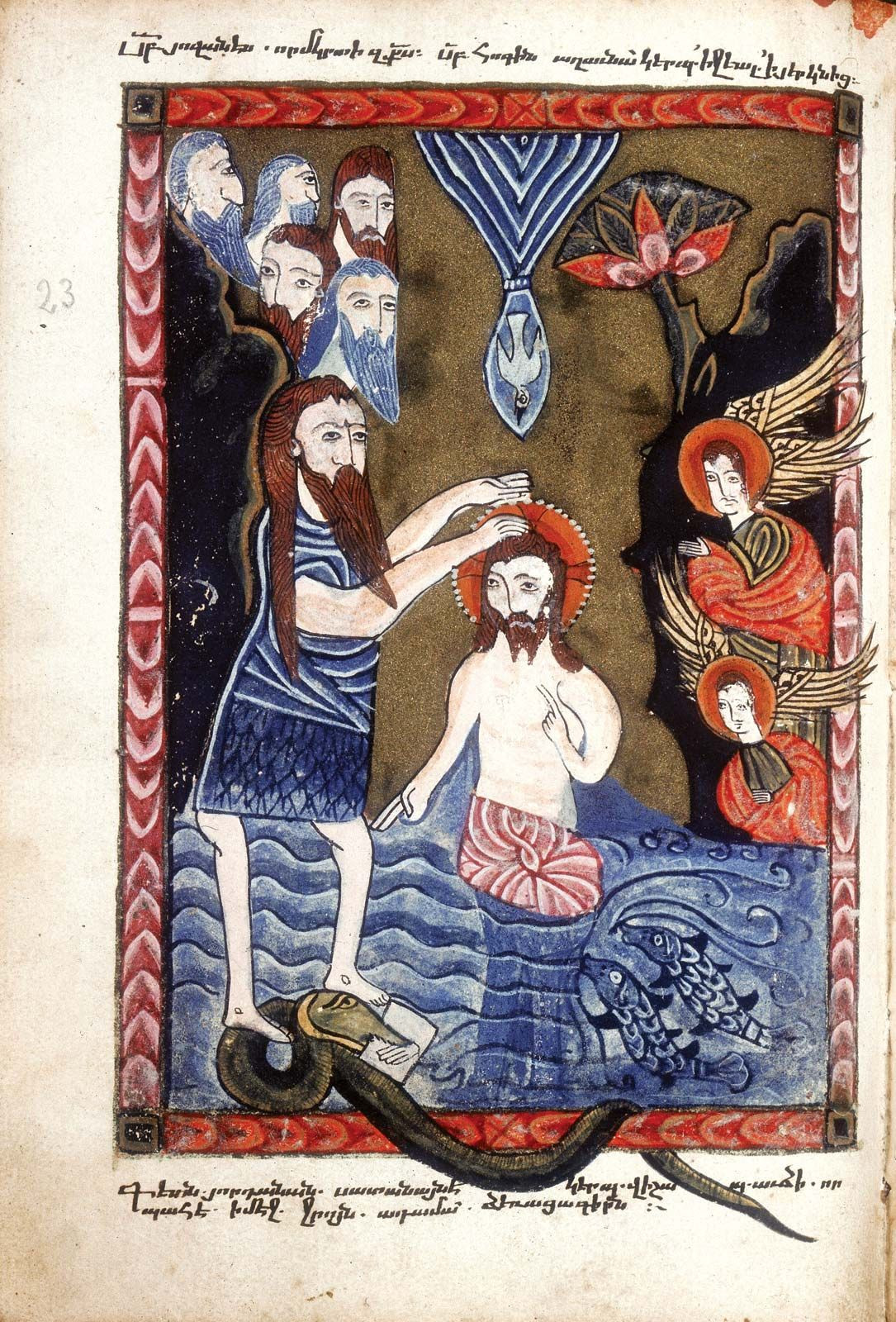John the Baptist, a pivotal figure in religious history, served as a prophet and the forerunner to Jesus Christ. His life, though marked by austerity and ultimate sacrifice, holds immense significance in both Jewish and Christian traditions. Born in Judaea to Zechariah, a priest, and Elizabeth, a relative of Mary, mother of Jesus, Saint John Baptist’s early life was steeped in religious context. He spent his formative years in the Judaean Desert, a region known for its monastic communities and hermits, potentially influenced by groups like the Essenes, who emphasized strict religious observance.
Saint John the Baptist in the Wilderness, a 15th-century painting by Giovanni di Paolo, depicting the ascetic lifestyle of the prophet in the desert.
Around 27-29 AD, John emerged as a prominent prophet in the lower Jordan Valley. Unlike his priestly lineage, he embraced the prophetic role, echoing the style of ancient prophets through his clothing and diet. He wore garments of camel’s hair and sustained himself on locusts and wild honey, reflecting either a strict adherence to Jewish purity laws or the ascetic practices of a Nazirite. His message was directed at all levels of Jewish society: the Kingdom of God was imminent. He called for repentance from sins and baptism as preparation for God’s impending judgment, urging people to demonstrate genuine repentance through their actions.
The core of Saint John Baptist’s message revolved around the coming judgment and the need for spiritual preparation. He famously declared, “He who is coming after me is mightier than I,” sparking debate about whether he was referring to God, the Messiah, or another divine figure. His distinctive practice of baptism with water was contrasted with a future baptism “with the Holy Spirit and with fire,” suggesting a more profound spiritual transformation or a symbolic judgment to be carried out by the one to come.
John’s followers were known for their devoutness, practicing fasting and prayer beyond the requirements of Jewish law. His ethical teachings emphasized justice and charity, demanding righteousness from everyone. Baptism, for Saint John Baptist, was not merely a ritualistic act but a symbol of repentance, performed by immersion in the flowing waters of the Jordan River. It was a public declaration of turning away from sin and preparing for the coming judgment. It was not intended as a sacrament in the later Christian sense, bestowing forgiveness or establishing a new religious order, but rather as a call to spiritual readiness within the existing Jewish context. While other baptismal groups existed during that era, Saint John Baptist’s baptism was unique in its prophetic significance and connection to the coming Messiah.
The Baptism of Jesus by Saint John the Baptist, as depicted in a 16th-century Armenian illuminated manuscript, highlighting the pivotal encounter between the two figures.
Tragically, Saint John Baptist’s ministry was cut short. After baptizing Jesus, he was imprisoned by Herod Antipas, the ruler of Galilee. The Gospels suggest his imprisonment stemmed from his condemnation of Herod’s marriage to Herodias, his brother’s divorced wife, a union considered unlawful under Jewish law. This denouncement posed a political threat to Herod, potentially inciting unrest among his Jewish and Arab subjects. Ultimately, Saint John Baptist was executed. His death, preceding Jesus’, was later seen by some as divinely avenged when Herod suffered a defeat by King Aretas IV, whose daughter Herod had divorced to marry Herodias. Saint John Baptist’s followers honored his memory, recovering and burying his body, with his traditional burial site located at Sebaste, near his ministry area. Saint John Baptist remains a central figure, revered for his prophetic role, his message of repentance, and his crucial part in preparing the way for Jesus Christ.


